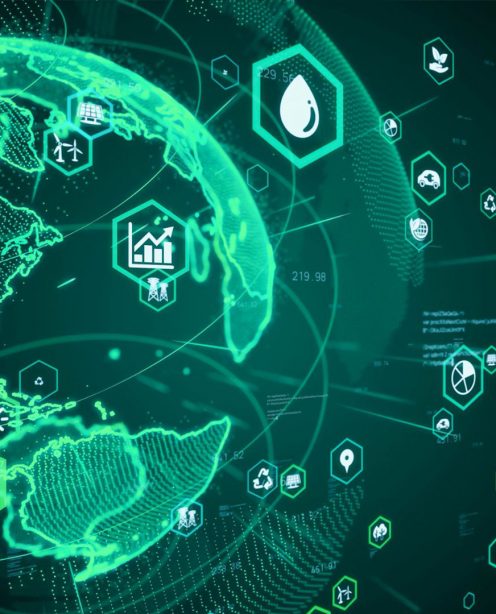What is sustainability in the digital world?
We have all become so used to digital channels and technologies being quick, reliable and able to meet so many of our requirements. This means it’s easy to forget about what goes on behind the scenes to make all this happen.
The internet requires vast amounts of electricity to make it function to the levels we have now come to expect. But this comes at an environmental cost, with approximately 3.7% of all carbon emissions globally being driven by internet usage. This is only likely to rise, given our collective hunger to consume more information and in turn, more data.
Within the context of ecommerce, sustainability is all about finding ways to reduce the carbon footprint associated with an ecommerce store for example. This can be related to both physical items, such as packaging and shipping, as well as the various digital aspects at play.
How can sustainability be engendered within ecommerce store development?
When it comes to supporting sustainability as part of an ecommerce project, much of the effort needs to focus on streamlining websites and limiting their carbon footprint.
This can be done in a number of ways. The first is by focusing on energy efficiency, and ensuring that you are putting the right things in place to allow your website to operate with an awareness of the energy it is consuming. Great ways to achieve this is through positive hosting decisions and site optimisation. You can choose to host your website on servers powered by renewable energy sources, thus contributing to positive sustainability practices.
And you can optimise the code your website uses and the images included within it to enable faster loading times. This in turn contributes to lowering the amount of energy consumption your server will do, and will therefore lower your site’s carbon footprint.
Another excellent step to take is to commit to carbon offsetting your website. This simply means calculating the carbon footprint of your website and then investing in carbon offset projects accordingly. This can mitigate the environmental impact operating your ecommerce website will have.
Selling sustainably
Beyond the digital space, ecommerce businesses can also take physical steps to enhance the sustainability of their store and their operations.
An initial factor to consider is regarding the suppliers and manufacturers with whom you are working. Are they following environmentally-friendly and ethical practices? If not, then opting for a more sustainability-focused partner can benefit your business and lower your carbon footprint.
The products you sell can also be designed with durability and longevity in mind. This will reduce the need for customers to buy replacements, while also encouraging your customers to recycle products at the end of their lifecycle can support sustainable practices.
You can invest in recyclable or biodegradable packaging when sending out your products, while you can also look to reduce and minimise waste throughout your ecommerce processes. Additionally, optimising shipping routes and committing to green logistics can further support your sustainability efforts.

Why should I commit to sustainable practices in ecommerce?
Sustainability is a vital thing for businesses across all industries to commit to because it supports the protection of the environment and ultimately the world we live in.
But even if you do not think this is a priority in and of itself (we would encourage you to revise this viewpoint!), then there is a major reason to still adopt sustainable practices – your customers.
According to McKinsey, around two-thirds of shoppers say they consider sustainability when buying products, and this figure rises to around three-quarters of millennial shoppers. This truly emphasises the potential for sustainability to drive purchasing decisions both now and in the future, as new generations of sustainability-conscious buyers enter the market.
An Expert View
When it comes to sustainability and ecommerce, Un.titled UX Designer Kultar Ruprai has this to say:
“The spotlight is very much on sustainability at present, even though this is not a new concept. Businesses across industries are now being urged to become greener in some way, shape or form. That covers their products – Apple for example recently announced their first carbon neutral watch – as well as their packaging, delivery, website design and hosting practices.
“In ecommerce, there are sustainability factors and points across the journey from start to finish.
For websites and website design, this includes the colours used, the number of fonts used, content, images, videos, and the levels of optimisation. Add to this the pressure to host a website in a sustainable way, and there are certainly a number of things to consider.
“However, with sustainable ecommerce websites specifically, there are now more and more tools available online to support people in making their ecommerce site more sustainable. Tools like Ecograder and Digital Carbon Online can help you get an understanding of where your business is now in terms of sustainable practices, and how to move to the next level.

Get the right partners to support your journey
At Un.titled, we understand the importance of sustainability and love to share our sustainable ecommerce ideas with clients.
We want to help ecommerce businesses not only develop an understanding of how their website may have a larger carbon footprint than they may realise, but also point to ways in which this can be reduced and sustainability can prevail.





